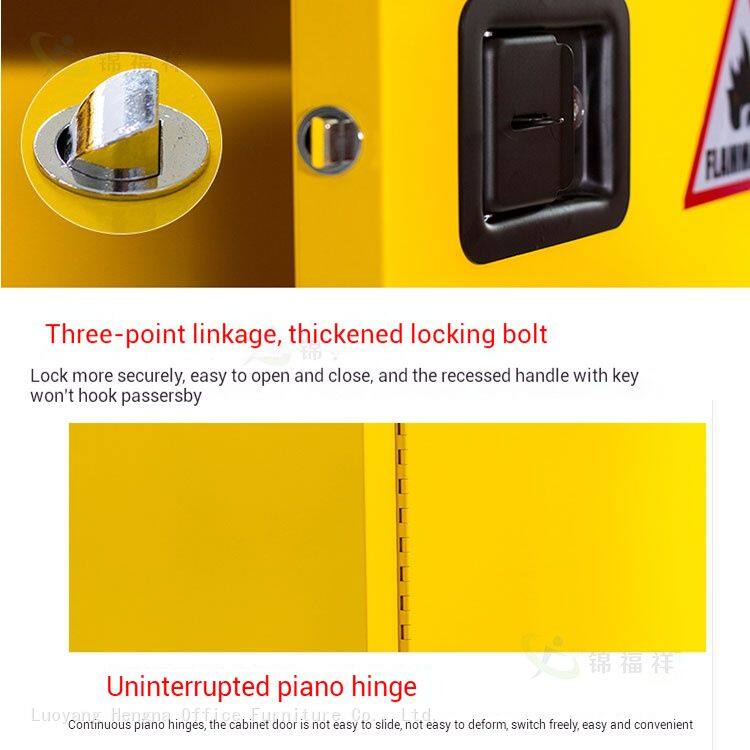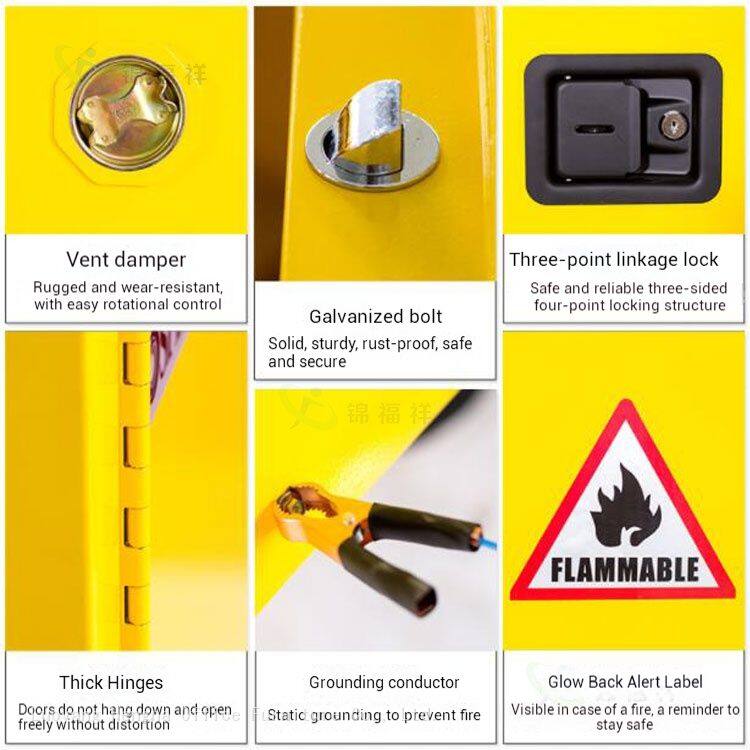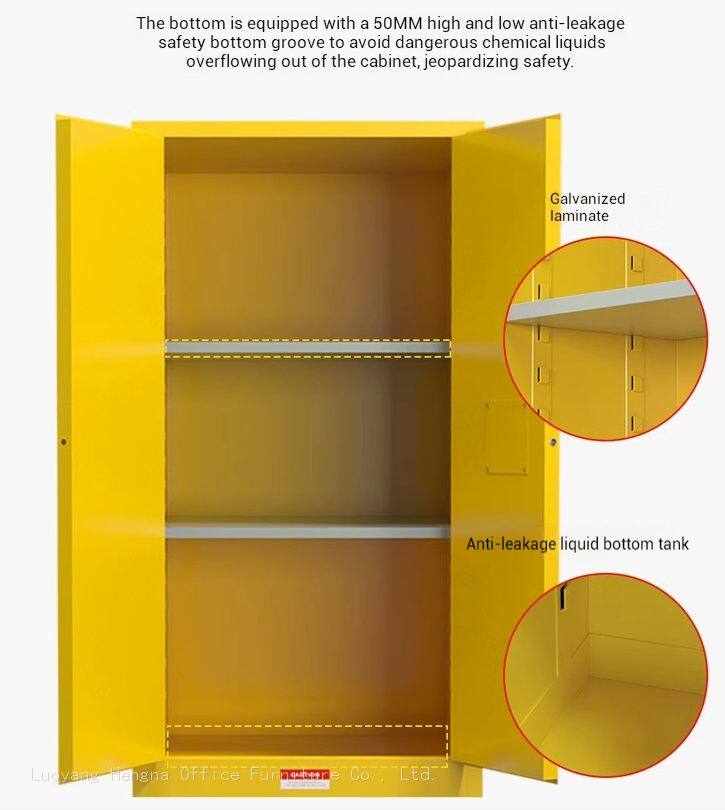-
 Sarah
Hi there! Welcome to my shop. Let me know if you have any questions.
Sarah
Hi there! Welcome to my shop. Let me know if you have any questions.
Your message has exceeded the limit.

Lab Safety Guide: Choosing the Right Flammable Liquid Cabinet for Research Facilities
2025-11-06 13:36:18
Research laboratories handle numerous flammable liquids daily, making proper storage solutions essential for maintaining safety and regulatory compliance. The selection of appropriate flammable liquid cabinets represents a critical decision that impacts not only laboratory safety but also research efficiency and operational continuity. This comprehensive guide explores the key considerations for choosing flammable liquid storage cabinets specifically designed for research facilities and how proper selection can enhance both safety and research productivity.
Assessing Laboratory Storage Requirements
Research laboratories must first conduct thorough assessments of their specific storage needs before selecting flammable liquid cabinets. This assessment should include an inventory of all flammable liquids used in the facility, their quantities, chemical properties, and usage patterns. Different research activities may require varying levels of accessibility and security, influencing cabinet selection and placement strategies.

The assessment should also consider the physical layout of the laboratory, including available space, ventilation systems, and emergency access routes. Research facilities often have limited space, making cabinet dimensions and configuration crucial factors in the selection process. Additionally, the assessment should account for future research needs and potential expansion of chemical inventories, ensuring that selected storage solutions can accommodate growth without requiring complete replacement.
Understanding Laboratory-Specific Regulations
Research laboratories must comply with multiple regulatory frameworks beyond general OSHA requirements, including EPA regulations, fire codes, and institutional safety policies. Academic research facilities may have additional requirements from funding agencies or accreditation bodies. Understanding these various regulatory requirements is essential for selecting cabinets that meet all applicable standards and ensure comprehensive compliance.
Laboratory-specific regulations often address issues such as chemical segregation, inventory management, and documentation requirements that may influence cabinet selection and organization. Research facilities should work closely with their safety officers and regulatory compliance specialists to ensure that selected storage solutions meet all applicable requirements while supporting efficient research operations.
Construction Materials and Design Features
Laboratory flammable liquid cabinets should feature construction materials that resist chemical corrosion and withstand the demanding laboratory environment. Stainless steel construction offers excellent chemical resistance and durability, making it ideal for research facilities that handle various chemicals. The cabinet design should include features that support laboratory workflows, such as easy-to-clean surfaces and chemical-resistant finishes.
Design features that enhance laboratory safety include self-closing doors with magnetic latches that ensure secure closure while allowing easy access during research activities. The interior configuration should include adjustable shelving that can accommodate various container sizes and types commonly used in research. Some laboratory cabinets feature specialized compartments for specific chemical types or research applications, enhancing organization and safety.

Ventilation and Air Quality Considerations
Proper ventilation is crucial in laboratory environments where chemical vapors can accumulate and create hazardous conditions. Flammable liquid cabinets should include ventilation systems that integrate with the laboratory’s overall ventilation strategy. The cabinet vents should be positioned to promote proper air circulation while preventing flame entry during fire incidents.
Laboratory cabinets may require specialized ventilation features based on the specific chemicals stored and the laboratory’s ventilation capacity. Some research facilities implement local exhaust ventilation systems that connect directly to cabinet vents, providing enhanced vapor removal and air quality control. The integration of cabinet ventilation with the laboratory’s HVAC system ensures comprehensive air quality management and worker protection.
Security and Access Control
Research laboratories often handle valuable or sensitive materials that require additional security measures beyond standard safety requirements. Flammable liquid cabinets should incorporate security features that prevent unauthorized access while maintaining accessibility for authorized personnel. This balance between security and accessibility is particularly important in research facilities with multiple users and varying access requirements.
Security considerations may include keyed locks, combination locks, or electronic access control systems that can be integrated with the laboratory’s security infrastructure. Some research facilities implement inventory management systems that track chemical usage and access, providing additional security and accountability. The selected security features should align with the laboratory’s overall security policies while supporting efficient research operations.
Integration with Laboratory Workflows
Flammable liquid storage cabinets should enhance rather than hinder laboratory workflows and research activities. The cabinet placement and configuration should support natural movement patterns and minimize disruptions during research procedures. Consideration should be given to the frequency of chemical access, the types of research activities conducted, and the number of personnel requiring access to stored materials.

Workflow integration may include features such as pull-out shelves that improve access to stored chemicals, external storage for frequently used items, or specialized compartments for specific research applications. Some laboratories implement color-coding systems or labeling strategies that align with research protocols or chemical categories, enhancing organization and efficiency while maintaining safety compliance.
Budget Considerations and Value Assessment
Research laboratories often operate under budget constraints that require careful consideration of storage solution investments. While cost is an important factor, laboratories should prioritize safety and compliance over initial price considerations. The total cost of ownership should include factors such as durability, maintenance requirements, and potential regulatory compliance costs.
Value assessment should consider the long-term benefits of proper flammable liquid storage, including enhanced safety, improved research efficiency, and reduced risk of regulatory violations. Some laboratories may qualify for grants or funding specifically for safety equipment upgrades, helping to offset the initial investment costs. The selected storage solution should provide optimal value while meeting all safety and operational requirements.
Future-Proofing and Scalability
Research needs and chemical inventories often evolve over time, requiring storage solutions that can adapt to changing requirements. Laboratories should consider the scalability of selected storage solutions, including the ability to expand capacity or reconfigure cabinet layouts as research programs grow or change. Modular cabinet systems can provide flexibility for future expansion while maintaining consistency with existing storage infrastructure.
Future-proofing considerations should also include technological integration capabilities that may become important as laboratory operations evolve. Smart storage systems with inventory tracking, environmental monitoring, or remote access control can provide enhanced functionality and support advanced research operations. The selected storage solution should accommodate current needs while providing flexibility for future technological integration and operational changes.

Tags: Lab Safety Guide, Right Flammable Liquid Cabinet, Research Facilities

